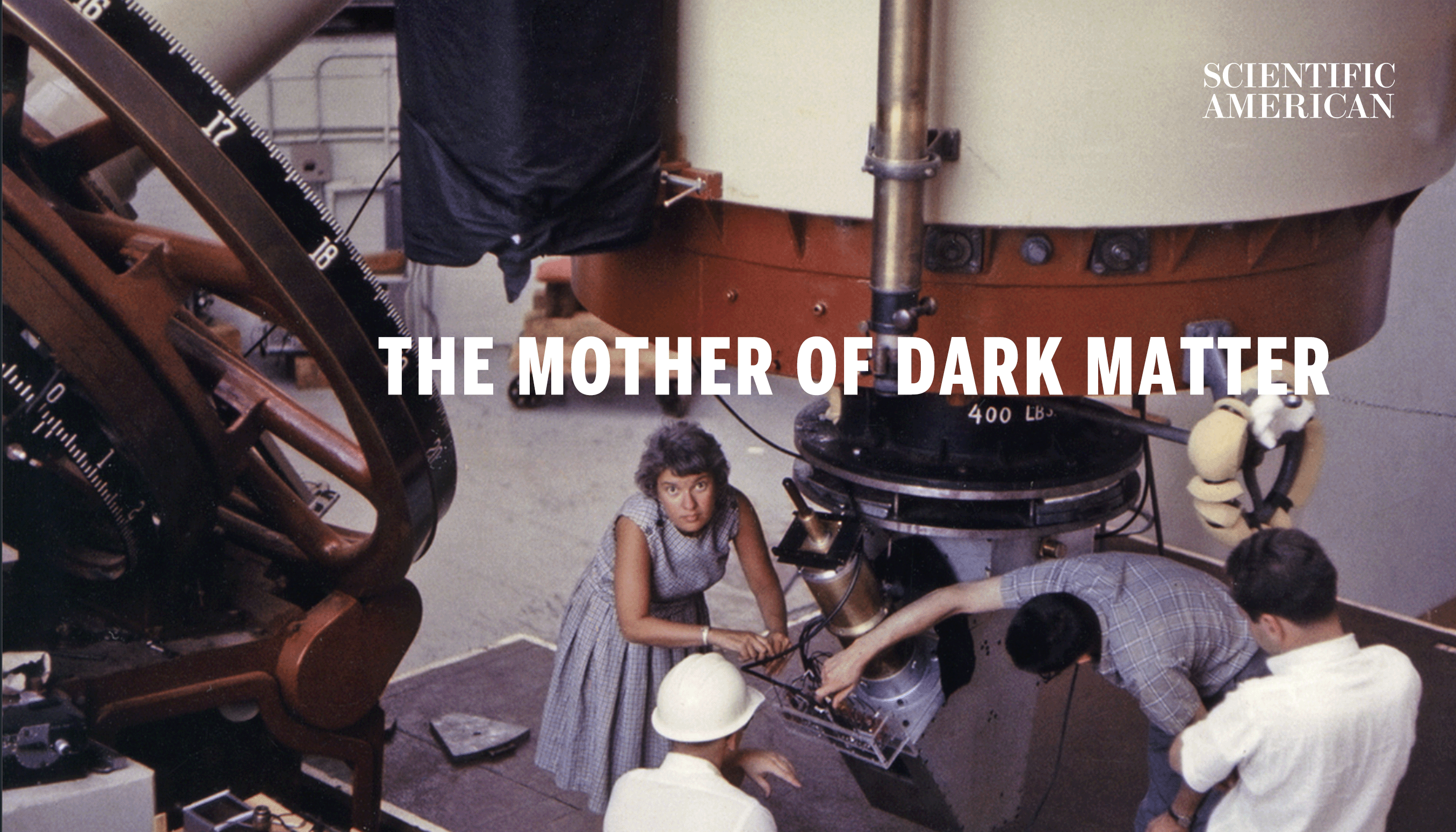Vera Rubin Lives on in Lives of the Women She Helped in Astronomy

Johanna Teske: Ok, this is a spectrum.
Teske: Vera Rubin means a lot to a lot of astronomers. This was one of the instruments that she used to help discover the presence of dark matter, which we now know is the dominant form of matter in our universe.
Teske: She really was part of trying to push astronomy to be more inclusive, and make more opportunities for women in science and astronomy.
[TEXT]
In 1942, a fourteen-year old teenager named Vera Rubin built a telescope with her father out of cardboard.
She would go on to change our understanding of galaxies — and open doors for female astronomers.
Alycia Weinberger: She is often credited as the mother of dark matter, because the science that she is most well known for is discovering that galaxies seem to have a lot more mass in their outskirts than can be accounted for by the amount of visible light coming from their stars.
[TEXT]
in 1948 she received a bachelor’s from Vassar in astronomy — the only astronomy graduate.
After being rejected from Princeton for being female— Vera enrolled in Cornell instead,
where she studied 109 galaxies and made one of the first observations of Hubble’s law
— or how galaxies move in relation to each other.
Princeton wouldn’t admit women to its astronomy program for another 27 years.
Teske: For a long time, women weren’t highlighted or their roles in science weren’t highlighted as much.
[TEXT]
After years of teaching, Vera C. Rubin joined the Carnegie Institute for Terrestrial Magnetism in 1965 where she met collaborator Kent Ford. With Kent Ford, she used a spectrometer to analyze spiral galaxies including Andromeda galaxy, about 2.5 million light years away.
Weinberger: Very carefully and taking advantage of new instrumentation that was developed here, was able to measure how fast stars in the outer parts of galaxies were rotating about their centers.
Weinberger: She was particularly interested in taking spectra. So that’s where we break up the component light from an astronomical object into its component colors, which give us a lot of information about how that object is moving and what it’s composed of.
[TEXT]
She and Ford found something surprising.
Weinberger: Vera discovered that the outer reaches of galaxies seemed to be moving too quickly. That led to the hypothesis that there’s some sort of dark matter, that is matter that has gravity, but doesn’t interact with light or doesn’t produce late, that could explain these peculiar rotation curves.
Teske: These are observations that she kind of painstakingly made.
— Yeah just you know, our favorite UGC.
Teske: And I could just imagine how it was controversial at the time. This also turned out to be true about exoplanets, which is what I work on.
[TEXT]
Rubin kept on producing flat curves for decades until her results could no longer be denied.
Along with Kent Ford, she analyzed over sixty galaxies.
Vera Rubin also continued to fight for women her entire life.
Weinberger: So Vera was an incredibly strong presence in this department for a lot of years. She had a tremendous influence on the way I thought about women in science and the capabilities of women. She said, there is no science that can be done by a man that can’t be done by a woman.
[TEXT]
Despite a lifetime of accomplishment, Vera Rubin never won a Nobel Prize.
Teske: And I was so angry that she hadn’t that, you know, a Nobel Prize in the time that she was alive. But that’s not the end all, be all. And there are lots of other ways to honor people.
[TEXT]
Vera Rubin is the first woman to have an observatory — the Vera C. Observatory — named in her honor.
She also received the National Medal of Science.
Teske: I like to think that we’re carrying forward that legacy of encouraging curiosity in everyone, really, and emphasizing that there’s lots of ways to do science, a lot of approaches to science, and that if you’re hardworking and curious and have a question, that it’s worth, worth investigating.


